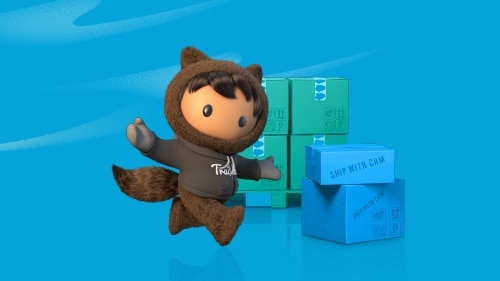Editor’s note: This article was updated on November 6, 2020.
I have a commerce confession. As a shopper, I hate doing returns. Hate, hate, hate them. It gives me anxiety, and I avoid it; I procrastinate doing them. I’d almost rather eat the cost of the item than deal with the return.
Case in point: a recent experience I had (the brand involved shall remain nameless). After deciding to return an item, I emailed the company to request a prepaid return label. When the label failed to materialize in my inbox, I retried, and waited, and retried again (yes, I typed my email correctly!). Frustrated, I went to the website to chat with customer support, but there was no chat. So I finally resigned myself to call the customer service telephone number — and deal with a human — only to be stuck on hold for 35 minutes. When I finally got through, I was transferred between three different departments, each of whom I had to repeat my details and situation to. Ultimately, they weren’t even able to help me.
Did I mention I hate returns?
This is the exact opposite of what an ecommerce shopping experience should be in 2020. Thankfully, technology is transforming and seamlessly connecting the ordering and fulfillment experience from shopping and shipping to delivery and returns. This ensures t merchants come through for their customers when it matters most: the moment a customer swaps their money for the promise of a product delivered on time, intact, and on their terms. And if it’s not, returns are hassle-free.
Customer experience matters more than ever
Today, what differentiates one brand from another is the experience. Eighty percent of customers say the experience a company provides is as important as its products or services. This demand has only increased in light of the COVID-19 pandemic. With brands making the shift to digital first, it’s crucial that shopping experiences are seamless and connected through the entire customer lifecycle. And yes, that includes post-purchase!
When it comes to order management, shoppers want complete transparency and control of their buying experience. This can include:
- Updating a shipping address
- Checking order status
- Canceling an order
- Returning an order
- Choosing a shipping carrier and payment method
Salesforce Order Management puts the customer at the center of everything. It lays the foundation for exceptional shopping experiences that drive customer loyalty.
There are critical moments in the shopping journey that can either annoy or amaze your customers. These moments help determine whether they have a great experience or a poor one. Here are a few ways Salesforce Order Management helps you ensure that those moments amaze your shoppers:
Provide flexibility in shipping, delivery, and returns
Consumers want choices, and they want to be in control of those choices. From one-hour delivery in metro areas to weekend delivery, in-store pickup, and split shipments, your customers expect options that align with their lifestyle. They expect these options to be displayed clearly on the product and checkout pages. The same goes for returns. Customers want to print out their own shipping labels, track their return online, and, if you have physical stores, return items to the store.
Brands that enable location-level inventory and keep stock updated in real time can meet and exceed these expectations for a seamless online shopping experience.
Make sure customers can self-serve
Your customers want to check order status, receive updates through text or email, and change shipping details as needed. If they have to return an item, they want to initiate the process themselves. Live chats are a quick way to reach customer service (including bots) for service requests. If a service request requires a live person, the rep should have a real-time, unified view of the customer’s activity.
Give your employees a 360-degree view of customers
Few things are more annoying than having to give the same information to different people within your organization. Salesforce Order Management connects commerce and service to give brands a real-time, unified view of each customer in a single pane of glass. A commerce transaction, for example, is automatically made visible to customer service reps who deliver fast, personalized, and more informed service. Reps can even place orders on behalf of customers, add coupons, and more.
When you reduce friction, empower employees, and maximize speed and efficiency, you build strong relationships with customers. And doing so at global scale helps ensure that you’re delivering on your brand promise to your shoppers from wherever they are in the world, all on an extensible and agile platform built to grow with you.
Ready to go beyond the button?
Learn how to improve the customer experience across the entire order lifecycle.































